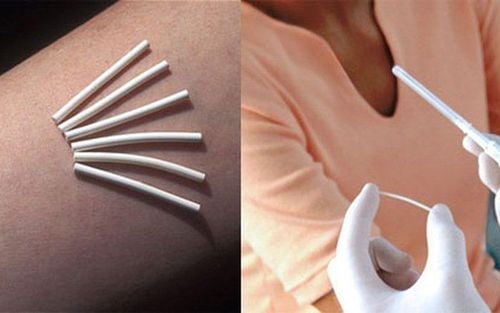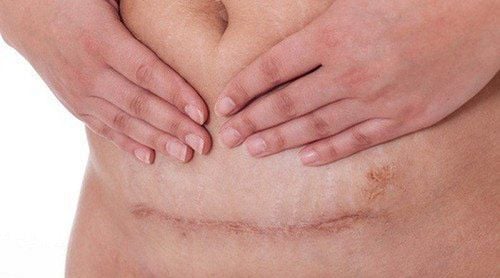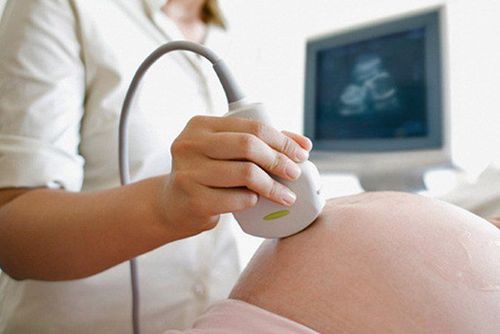This is an automatically translated article.
The article was professionally consulted by Specialist Doctor I Le Thi Phuong - Department of Obstetrics and Gynecology - Vinmec Ha Long International Hospital.Uterine rupture is one of the five dangerous obstetric complications that directly affect the fetus and mother. If not detected and treated in time can be fatal, uterine rupture during labor is more common than uterine rupture during pregnancy.
1. What is uterine rupture?
5 dangerous obstetric complications can be mentioned:Uterine rupture Veterinary abruption Postpartum haemorrhage Postpartum infection Neonatal umbilical tetanus Uterine rupture is a condition in which the uterus is torn from the mucosa through the muscle layer, If the whole peritoneum is reached through the uterine cavity to the abdomen, it is called complete uterine rupture. If the peritoneum is intact, the uterus is incomplete. Uterine rupture that affects either the bladder or the gastrointestinal tract is called complex uterine rupture.
Currently, thanks to the advancement of science in the field of anesthesia and resuscitation as well as the improved level of obstetrics and gynecology, the expansion of the pregnancy management network, the limitation of the rough procedures, the indication for cesarean section. Timely, the rate of uterine rupture has been greatly reduced. Uterine rupture can occur during pregnancy, but is more common during labor.
One of the optimal methods to be performed in an emergency when uterine rupture occurs is Uterine-preserving surgery due to uterine rupture - Surgery should be performed at reputable medical facilities, doctors have a high level of expertise to limit unfortunate cases from happening. Vinmec International General Hospital is one of the largest and most prestigious medical facilities in Vietnam with advanced and modern equipment; converging a team of doctors with rich expertise and experience; Quality of examination and service is always the hospital's top priority.
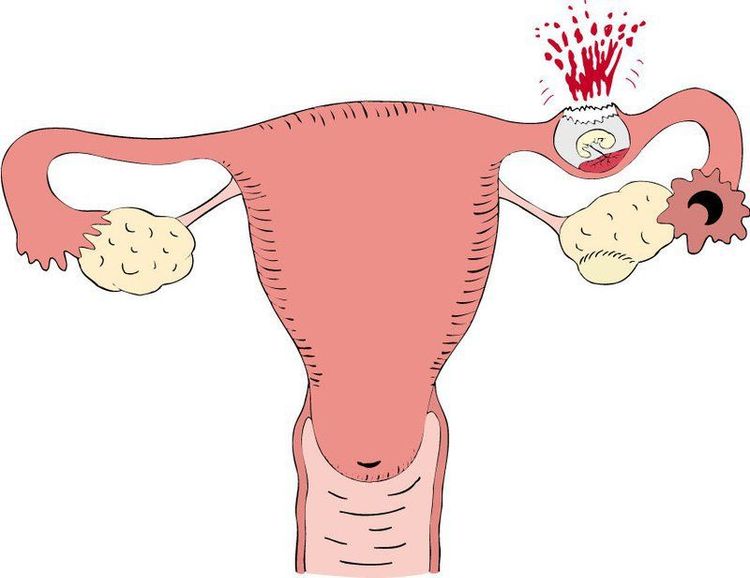
2. Uterine rupture during pregnancy
2.1. Causes Uterine rupture during pregnancy can occur in pregnant women with old cesarean section scars due to:
Cesarean section in the body of the uterus Sewing up the ruptured uterus Cesarean section for two or more pregnancies (scarring) previous transverse surgery of the lower uterine segment, the more operations, the higher the risk of uterine rupture) Hysterectomy in surgical treatment of ectopic pregnancy in the horns. Cesarean section infected with infection at the incision or uterus Surgical removal of fibroids (if uterine fibroids eat into the endometrium) Sewing of uterine perforation after abortion 2.2. Symptoms Uterine rupture during pregnancy can occur in the second and third trimesters of pregnancy but there are no signs of threatened uterine rupture.
Pain occurs suddenly in the uterine region (usually at the site of an old incision). Bleeding in the vagina. In some cases, there are signs of dizziness, pale facial skin, rapid breathing, shallow breathing, panic, anxiety, cold hands and feet, sweating, rapid pulse, low blood pressure, sometimes possible Heart stop. Pain can radiate throughout the abdomen, sometimes the peritoneal reaction is very obvious. The uterus is no longer in its original shape, the fetal parts can be palpated just below the abdominal wall. In case of incomplete uterine rupture, the uterus can still be palpated but there is a sharp pain in the scar area of the uterus. The fetal heart is no longer audible. On vaginal examination: The fetus is not palpable and there is blood coming out from the hand.
3. Complications
If not treated promptly, especially uterine rupture occurs in the inoperable glands, can lead to death of both mother and fetus. The rate of hysterectomy is high in cases of uterine rupture. Visceral damage: can damage the bladder, ureters, hypogastric vessels, and colon during uterine rupture and during surgical management of uterine rupture.
4. Prevention
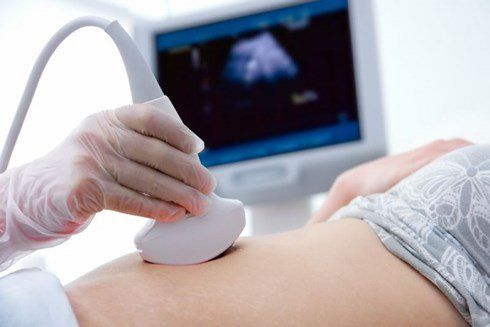
Strictly perform examinations and tests during pregnancy, especially those at the end of pregnancy. Women with uterine scars should wait at least 3 years before trying to get pregnant again. High-risk pregnant women should be regularly monitored and treated promptly. In case a pregnant woman has a narrow pelvis, has given birth many times, and has a uterine height of about 34 cm, she should choose a hospital giving birth at a higher level. Do not give birth too close together and have too many children. Mothers who have had a cesarean section if they want to get pregnant again, they should wait 3-5 years. When there are symptoms of abdominal pain and abnormal vaginal bleeding, pregnant women need to see a doctor immediately to be diagnosed with complications and take timely measures. Usually, when threatened uterine rupture is detected and treated, it can still save the mother and the fetus. But if the uterus has ruptured, the fetus will die and if not handled in time, the pregnant woman can also die.
With the desire to bring comprehensive care and equip the process of prevention management of obstetric complications in a scientific way, Vinmec International General Hospital has brought a Package Maternity Care Program for pregnant women. right from the start of pregnancy from the first months with a full range of antenatal check-ups, 3D, 4D ultrasounds, periodic ultrasound screening for fetal malformations and routine tests to ensure the health of both mother and child. both fetuses.
Please dial HOTLINE for more information or register for an appointment HERE. Download MyVinmec app to make appointments faster and to manage your bookings easily.
Recommended video: Prenatal diagnosis: What mothers should know





